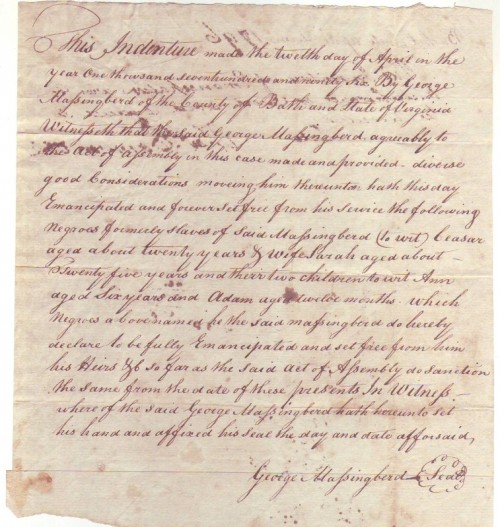The Original “Papers Please…”
It’s crunch time. Only 5 days until we open the Black/Inside: A History of Captivity & Confinement exhibition. While the exhibition focuses primarily on the concepts of captivity and confinement of Black people in the U.S., it also interrogates the meaning of “freedom.”
This brings me to an important artifact that I acquired and hope to exhibit as part of Black/Inside. It’s still iffy that we will be able to include it but I hope so.
The Constitution of the U.S. included a fugitive slave clause which insured that owners could recover runaway slaves across state lines. Any black person in the Colonies was vulnerable to being captured and sold into slavery. In order to protect themselves, free blacks had to prove that they were in fact “free.” Only a letter or document from their former slave masters or a white employer counted as “proof.” Yet even having such a document in hand was no guarantee that one couldn’t be re-enslaved. These “certificates of freedom” or “freedom papers” were treasured documents for some blacks. These documents were the tangible proof that they were no longer “captives” (to some degree).
Below is an example of a “certificate of freedom” dated 1796 that emancipates slaves named Caesar (age 20), his wife Sarah (age 25), and their children (Ann and Adam). I recently bid successfully on this item at auction and it is one of my prized possessions. I like to think of it as the original “papers please” example in American history.

1796 Virginia Emancipation (Freedom) Papers for Slaves Caesar, Sarah, and their children (Ann & Adam)
Stop by the exhibition during its month-long run (October 23-November 21) to see if this certificate of freedom will in fact be on display…
